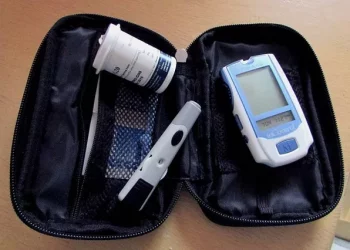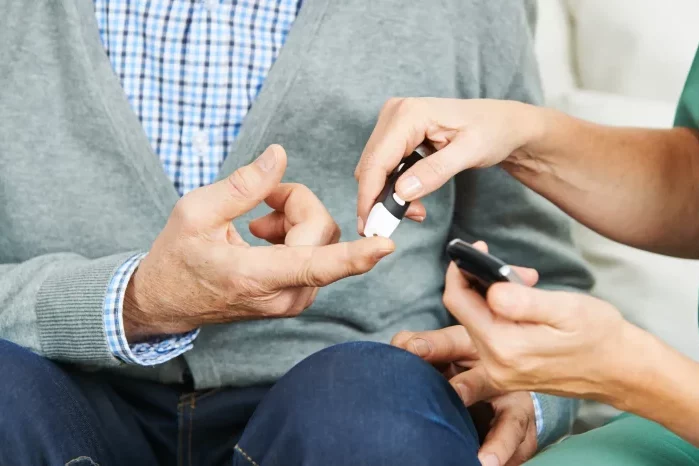Capillary blood glucose monitoring is an essential and widely used method for measuring blood glucose levels, particularly for individuals with diabetes. The process involves collecting a small sample of blood from a capillary, typically from the fingertip, to measure the amount of glucose present. This practice is pivotal for managing diabetes effectively, as it allows patients to track their glucose levels at home or in clinical settings. The results can inform immediate decisions regarding medication, diet, and lifestyle choices, making it an invaluable tool in the fight against diabetes.
In this article, we will explore the principles, techniques, tools, and best practices associated with capillary blood glucose monitoring, as well as the significance of accurate readings in diabetes management.
Understanding Blood Glucose and Diabetes
Blood glucose, also referred to as blood sugar, is the concentration of glucose (a type of sugar) in the bloodstream. Glucose serves as a primary energy source for the body’s cells and is derived from the digestion of carbohydrates. The body regulates blood glucose levels through the action of insulin, a hormone produced by the pancreas. Insulin helps glucose enter the cells, lowering blood sugar levels. However, in individuals with diabetes, this regulation system is impaired, leading to either insufficient insulin production or poor insulin sensitivity.
There are two main types of diabetes:
Type 1 Diabetes: A condition where the pancreas produces little to no insulin due to autoimmune destruction of insulin-producing cells.
Type 2 Diabetes: A condition where the body becomes resistant to insulin or the pancreas cannot produce enough insulin.
Both types of diabetes result in elevated blood glucose levels, which, if left uncontrolled, can lead to severe complications such as cardiovascular disease, neuropathy, kidney failure, and vision problems.
The Role of Capillary Blood Glucose Monitoring in Diabetes Management
Capillary blood glucose monitoring allows individuals with diabetes to measure their blood sugar levels in real time. This monitoring is essential for several reasons:
Daily Glucose Control: Frequent monitoring enables patients to make adjustments to their diet, insulin regimen, or physical activity to maintain blood glucose levels within target ranges.
Avoiding Hypoglycemia and Hyperglycemia: Blood glucose levels that are too high (hyperglycemia) or too low (hypoglycemia) can be dangerous. Regular monitoring helps prevent these extremes.
Long-Term Health Outcomes: Maintaining stable blood glucose levels can help prevent or delay complications associated with diabetes. Frequent monitoring provides valuable data to guide treatment decisions.
Patient Empowerment: Self-monitoring empowers individuals with diabetes to take an active role in managing their health and making informed decisions regarding their care.
Principles of Capillary Blood Glucose Monitoring
Capillary blood glucose monitoring involves the collection of a small blood sample from the capillaries in the skin, usually from the fingertip, although other areas such as the palm or forearm may also be used. This blood sample is then analyzed to determine the glucose concentration.
Blood Collection: The blood sample is typically obtained through a technique known as lancing. A lancet, a small, spring-loaded needle, punctures the skin, drawing a drop of blood from a capillary vessel. The lancet is designed to cause minimal pain and discomfort while providing a quick, precise puncture.
Glucose Measurement: After obtaining the blood sample, it is applied to a test strip that contains chemicals that react with glucose. The strip is inserted into a glucose meter, which measures the chemical reaction and provides a glucose reading on the display screen.
Glucose Meters: Modern glucose meters are portable, easy to use, and provide quick results. Some meters even allow for wireless transmission of results to mobile apps or healthcare providers for remote monitoring.
Capillary Blood Glucose Monitoring Techniques
Effective blood glucose monitoring requires attention to detail and adherence to certain techniques to ensure accurate readings. Below, we will cover the essential steps involved in the process.
1. Preparing the Equipment
Before beginning the blood glucose monitoring process, ensure that you have the necessary equipment:
Glucose Meter: Choose a reliable, calibrated glucose meter.
Test Strips: Ensure that the test strips are compatible with the meter and are within their expiration date.
Lancet Device: Prepare a lancet device and make sure the lancet is sterile and sharp.
Alcohol Swabs: Use an alcohol swab to clean the site of blood collection.
2. Selecting the Puncture Site
The fingertip is the most common site for obtaining a blood sample, but other sites such as the palm, forearm, or thigh may also be used. The puncture site should be clean, free of lotion or other substances, and preferably warmed to promote better blood flow. Massage the area lightly before puncturing the skin to help encourage blood circulation.
3. Performing the Blood Collection
-
Insert the lancet into the device and adjust it to the desired depth.
-
Clean the puncture site with an alcohol swab and allow it to dry.
-
Place the lancet device against the skin and press the release button to perform the puncture. The depth of the puncture should be enough to obtain a small drop of blood but not so deep that it causes excessive pain.
-
Discard the lancet safely after use.
4. Applying the Blood Sample
Once you have obtained a sufficient blood sample, apply it immediately to the test strip. The strip will typically have a designated area that will change color or react to the glucose in the blood. The meter will process the sample and display the result within seconds.
5. Interpreting the Results
The glucose meter will display the blood glucose reading, usually in milligrams per deciliter (mg/dL) or millimoles per liter (mmol/L). A normal fasting blood glucose level typically ranges from 70 to 100 mg/dL (3.9 to 5.6 mmol/L). A reading above 126 mg/dL (7.0 mmol/L) on two separate occasions may indicate diabetes. Readings outside of the target range can guide decisions regarding treatment, diet, and lifestyle adjustments.
Factors Affecting Capillary Blood Glucose Readings
Several factors can influence the accuracy and reliability of capillary blood glucose readings. Understanding these factors is crucial for interpreting the results accurately and making informed decisions:
Proper Technique: Incorrect technique, such as not obtaining a sufficient blood sample or improper handling of the test strip, can lead to inaccurate readings. It is essential to follow the correct procedure every time.
Temperature: Blood glucose levels can fluctuate due to temperature variations. Cold fingers, for instance, may cause vasoconstriction, reducing blood flow and leading to insufficient blood collection. Warming the hands before testing can help prevent this.
Medication and Insulin: Certain medications, including corticosteroids and diuretics, can interfere with glucose readings. It is important to be aware of any medications being taken and consult with a healthcare provider if necessary.
Recent Meals and Exercise: Blood glucose levels can be influenced by food intake and physical activity. A meal high in carbohydrates, for example, can cause a temporary spike in glucose levels. Similarly, exercise may lower glucose levels. It is important to monitor glucose levels at consistent times to assess trends and make adjustments accordingly.
Test Strip and Meter Quality: The quality and storage conditions of the test strips and meter can impact the accuracy of readings. Always store the strips in a cool, dry place and check the expiration date before use.
Best Practices for Accurate Capillary Blood Glucose Monitoring
To ensure the accuracy of capillary blood glucose monitoring, several best practices should be followed:
Test Consistently: Perform blood glucose tests at consistent times throughout the day, such as before meals and two hours after meals, to gain a clear picture of how your blood glucose levels are responding to food, exercise, and medication.
Record Your Results: Keep a log of your blood glucose readings, including the time of day, meal details, and any insulin or medication taken. This can help your healthcare provider identify patterns and make necessary adjustments to your treatment plan.
Use Control Solutions: Regularly check the accuracy of your glucose meter with a control solution provided by the manufacturer. This will help you ensure that the meter is functioning correctly.
Rotate Puncture Sites: To avoid irritation or scarring, rotate the puncture sites. If the fingertip is consistently used, it may become sore or calloused, leading to discomfort and inaccurate blood collection.
Consult with Your Healthcare Provider: Share your blood glucose readings with your healthcare provider during regular check-ups. This will help them adjust your treatment plan if necessary.
Capillary Blood Glucose Monitoring and Its Limitations
While capillary blood glucose monitoring is a valuable tool for managing diabetes, it does have some limitations. These include:
Inconvenience: Although portable, daily monitoring can become cumbersome for some individuals, especially when multiple tests are required throughout the day.
Accuracy Variations: Capillary blood glucose readings can sometimes differ from venous blood glucose readings, which are typically drawn from a vein. This difference can be influenced by various factors such as the site of blood collection and blood flow.
Lack of Continuous Monitoring: Unlike continuous glucose monitors (CGMs), capillary blood glucose monitoring provides only snapshot readings rather than continuous data, which may not fully capture fluctuations in blood glucose levels.
Conclusion
Capillary blood glucose monitoring is an essential aspect of diabetes management, providing individuals with valuable insights into their blood glucose levels. By using the proper techniques and adhering to best practices, patients can effectively monitor their condition and make informed decisions regarding their health. Although it has some limitations, capillary blood glucose monitoring remains a reliable and widely used tool in the management of diabetes, helping to reduce the risk of complications and improve overall quality of life.
Regular blood glucose monitoring, combined with healthy lifestyle choices and a well-managed treatment plan, is crucial for achieving long-term diabetes control and preventing the onset of severe complications. As technology continues to evolve, we can expect even more advanced and user-friendly monitoring tools to support individuals in their diabetes journey.
Related topics:
What Is the Diabetes Reading Range?

























